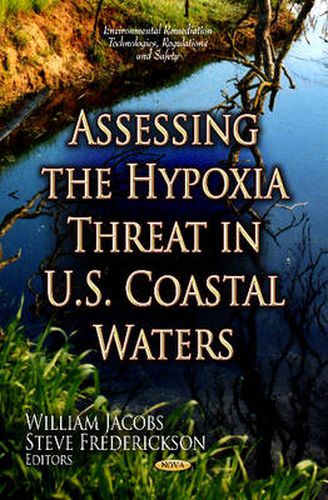Readings Newsletter
Become a Readings Member to make your shopping experience even easier.
Sign in or sign up for free!
You’re not far away from qualifying for FREE standard shipping within Australia
You’ve qualified for FREE standard shipping within Australia
The cart is loading…






The occurrence of hypoxia, or low dissolved oxygen, is increasing in coastal waters world-wide and represents a significant threat to the health and economy of our Nation’s coasts and Great Lakes. This trend is exemplified most dramatically off the coast of Louisiana and Texas, where the second largest eutrophication-related hypoxic zone in the world is associated with the nutrient pollutant load discharged by the Mississippi and Atchafalaya Rivers. Aquatic organisms require adequate dissolved oxygen to survive. The term dead zone is often used in reference to the absence of life from habitats that are devoid of oxygen. The inability to escape low oxygen areas makes immobile species, such as oysters and mussels, particularly vulnerable to hypoxia. This book examines the progress in understanding the dynamics of hypoxia where it occurs; understanding monitoring nutrient fluxes in watersheds; and how to reduce nutrient transport across the landscape.
$9.00 standard shipping within Australia
FREE standard shipping within Australia for orders over $100.00
Express & International shipping calculated at checkout
The occurrence of hypoxia, or low dissolved oxygen, is increasing in coastal waters world-wide and represents a significant threat to the health and economy of our Nation’s coasts and Great Lakes. This trend is exemplified most dramatically off the coast of Louisiana and Texas, where the second largest eutrophication-related hypoxic zone in the world is associated with the nutrient pollutant load discharged by the Mississippi and Atchafalaya Rivers. Aquatic organisms require adequate dissolved oxygen to survive. The term dead zone is often used in reference to the absence of life from habitats that are devoid of oxygen. The inability to escape low oxygen areas makes immobile species, such as oysters and mussels, particularly vulnerable to hypoxia. This book examines the progress in understanding the dynamics of hypoxia where it occurs; understanding monitoring nutrient fluxes in watersheds; and how to reduce nutrient transport across the landscape.